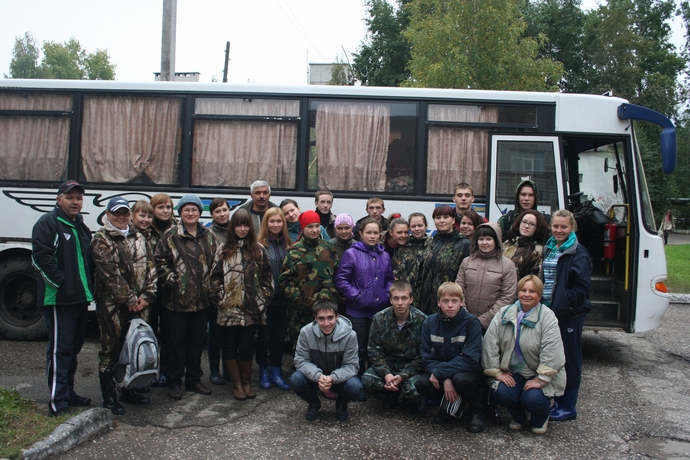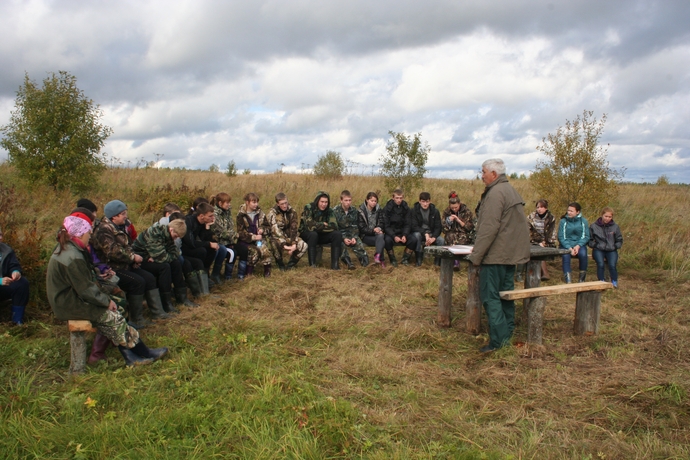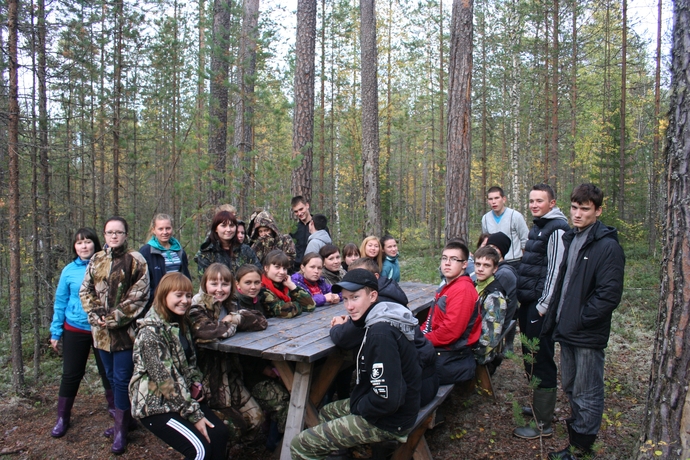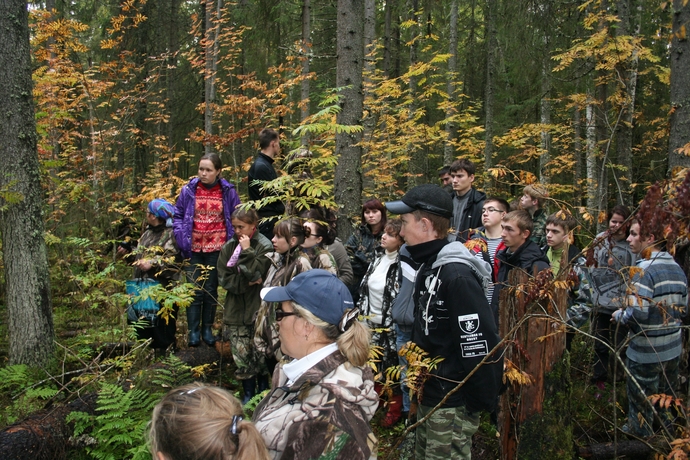Practice – from the first days of studies
More than 250 first-year students of the Syktyvkar Forest Institute got familiar with the history of the forest use, natural forest dynamics and biological diversity of taiga on the Komi Model Forest routes with the support of the Silver Taiga Foundation specialists Yury Pautov, Nikolay Shuktomov, and Elena Popova.
This was the administration of the Forest Institute who came forward with the initiative to organize educational seminars for the students. 9 seminars for the first-year students of different specialties, including future forestry engineers, ecologists, managers and many others, have been conducted throughout September.
The program of the seminars was diversified and intensive. Early in the morning the bus with the students set out to the “Chitaevo” route – one of six educational routes of the Komi Model Forest. It is devoted to the demonstration of the consequences of the human influence to the forest dynamics in the historic retrospective in the process of rural territory development, and development of the forest use in the area of the permanent Komi settlements. On every of 10 demonstration points different stages of the interaction between the forest and people were shown to the audience. With each point they went deeper and deeper into the history – from the modern age to the period of Peter the First reign. The main objective of the lecturer was to prove that all the principal stages of the man and forest interaction are closely related to the major social and political changes in the society.
On the final point of the “Chitaevo” route – experimental demonstration grounds – consequences of the modern pine restoration-oriented logging were shown to the students.
After a three-hour excursion the students went to the plantation of the Priluzje forestry unit, where they had lunch and a meeting with the Deputy Head of the Priluzje forestry unit Yury Mikhaylovich Serditov. He told them about the activities of the forestry unit as a forestry management body including such functions as control over the leaseholders’ activities, illegal felling control, forest protection against fires and pests and many other things.
Having said good-bye to the specialists, the students got on a bus and headed for Syktyvkar. However, it wasn’t the end of the seminar program. The students had 2 more demonstration points – “Pine” and “Spruce refugium” ahead of them. These points reflect two “opposite” types of natural forest dynamics. “Pine” demonstrates the type of the forest, which is often subjected to fires and gets formed through them. A calling card of this point is a patriarch-pine – a big old tree having miraculously survived and preserved until the present time in such a “developed” area. The participants of the seminar could hardly believe that a tree can live for more than 550 years. With a keen interest they were learning to define the age of a tree based on the external features and learned why precisely these big old trees are of great importance for the conservation of the forest biological diversity. A spruce refugium (from Latin refugium – refuge), to the contrary, represents a permanent environment without any cardinal changes over hundreds of years. Due to the special conditions such places represent a refuge for rare and vulnerable species, many of which are entered to the Red Book.
Such an intense meeting enabled the students to learn a lot of new things about the forestry and life of the forest as an integral living organism. It has to be noted that the main result of the seminar is not only acquiring of a new knowledge. The seminar also gave an opportunity to the first-year students to get to know each other better and to form one team in which all of them will spend next few years.
Translated by Irina Sokolova






